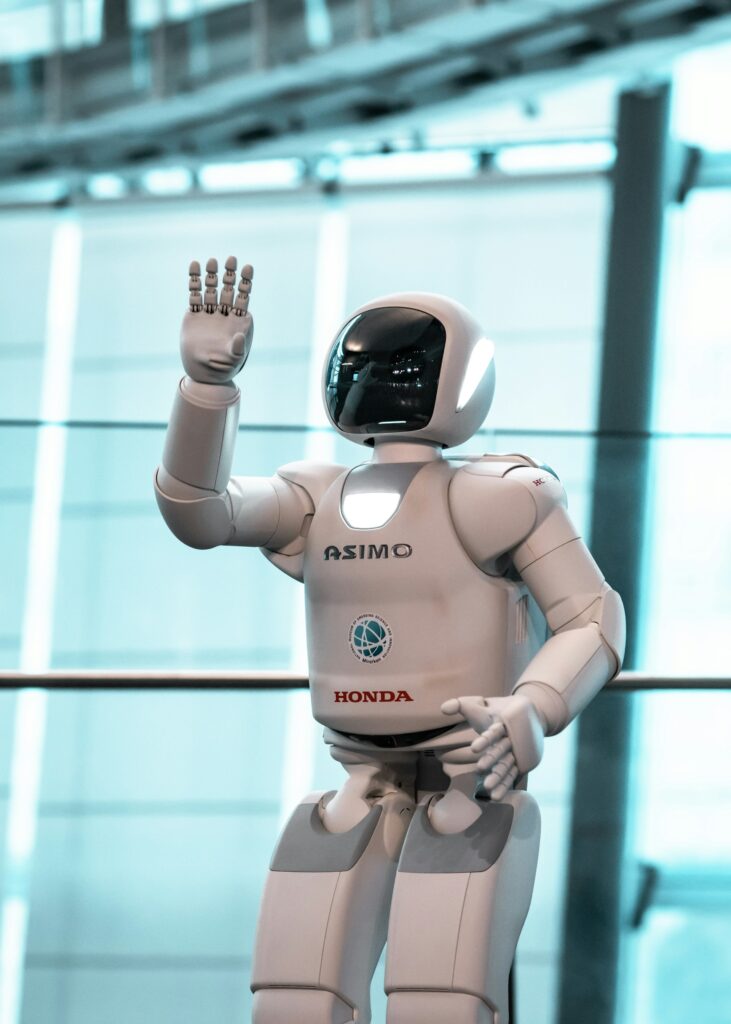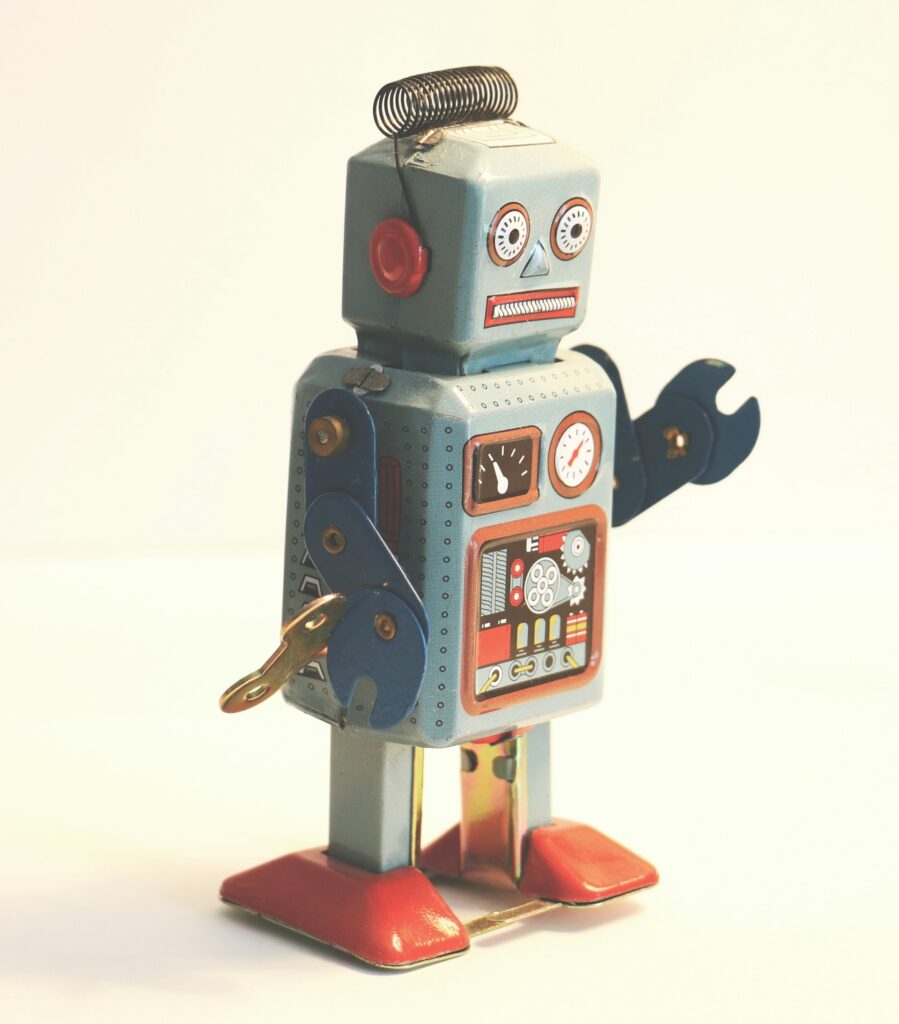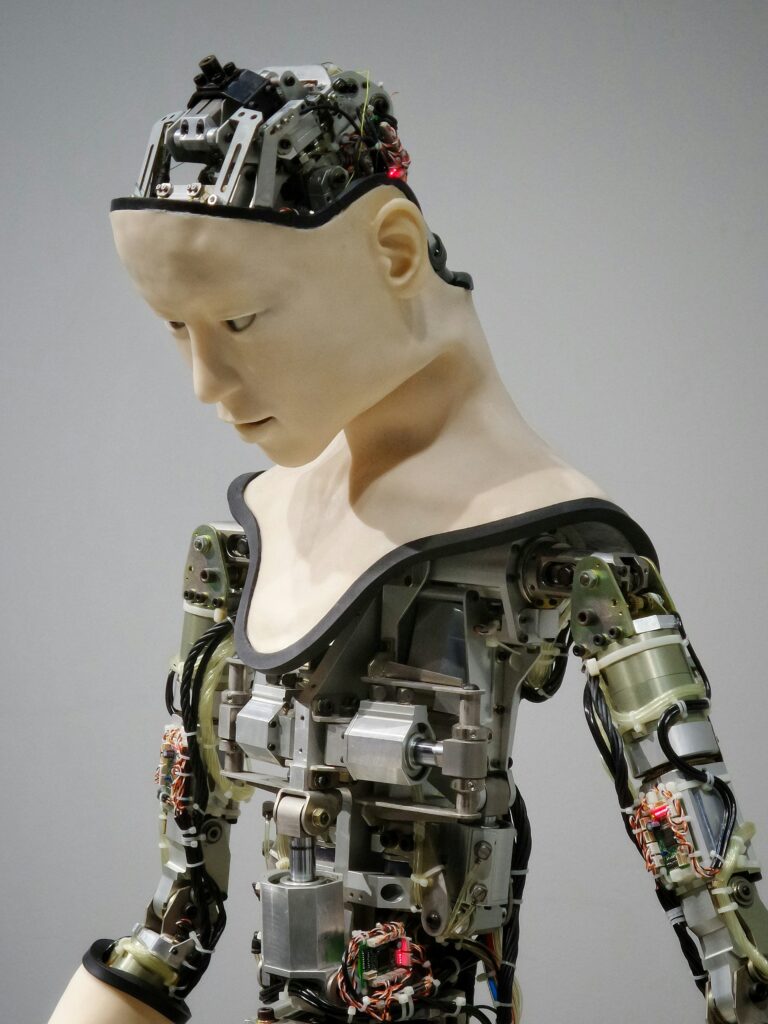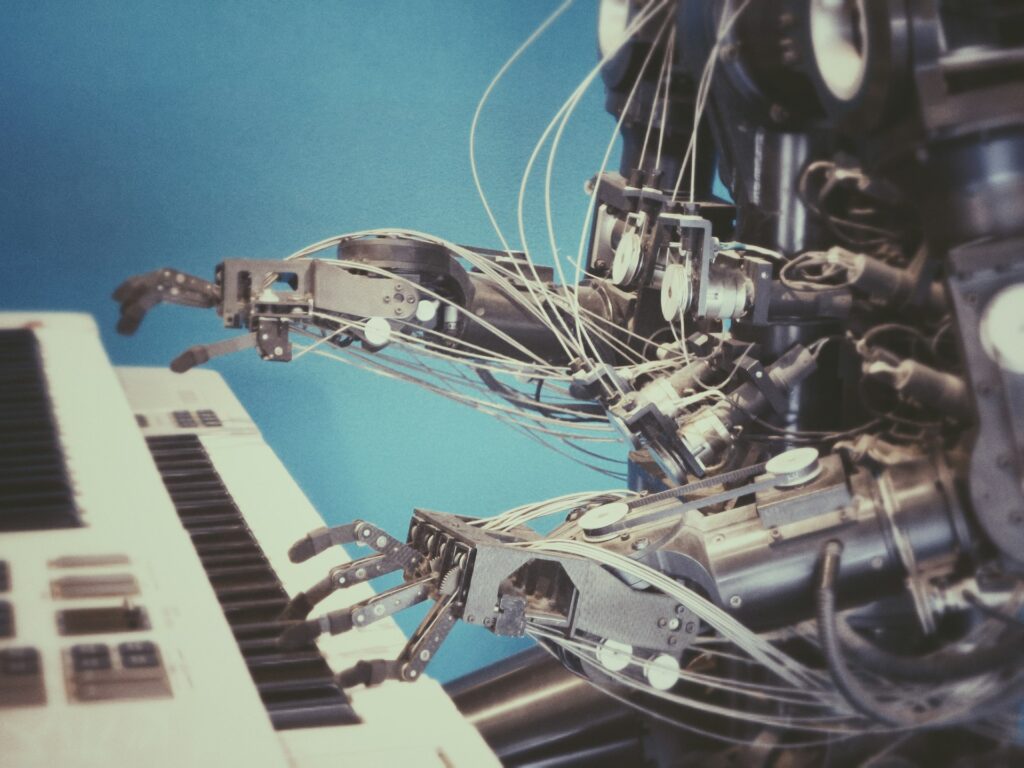
Introduction to Robotics
Robotics is a multidisciplinary field that involves the design, construction, operation, and use of robots, which are programmable machines capable of carrying out a series of actions autonomously or semi-autonomously. This domain encompasses various engineering domains, including mechanical, electrical, computer engineering, and artificial intelligence, creating a complex interplay of technologies that fuels advancements in automation. The significance of robotics in modern technology cannot be overstated, as it has revolutionized various sectors, enhancing productivity and enabling innovations that were once thought impossible.
With the advent of robotics, industries have transformed their operational frameworks, leading to substantial improvements in efficiency. For instance, in manufacturing, robots are employed for tasks such as assembly, welding, and packaging, significantly reducing human errors and operational costs, while increasing production rates. In the healthcare sector, robotic systems assist in surgical procedures, offering precision and minimizing recovery times for patients. This application of robotics not only improves results but also allows medical professionals to focus more on patient care.
Moreover, the integration of robotics with emerging technologies, such as the Internet of Things (IoT) and artificial intelligence (AI), is paving the way for smarter and more flexible robotic systems. These advancements enable robots to gather and analyze data in real-time, learn from their environments, and adapt their behaviors accordingly, leading to even greater efficiencies and innovations across various industries. As robotics continues to grow and evolve, it plays an increasingly critical role in addressing complex challenges, driving economic growth, and enhancing quality of life.
In essence, robotics represents a significant leap forward in technological capabilities, impacting multiple facets of everyday life and establishing itself as a foundational element for future advancements.
Robotics as a Multidisciplinary Field
Robotics is fundamentally a multidisciplinary field that incorporates various domains such as engineering, computer science, and artificial intelligence (AI). This interdisciplinary approach is vital for the effective development and deployment of robotic systems. In essence, robotics merges mechanical and electrical engineering to create hardware that can be both robust and precise. Engineers focus on designing and building the physical components of robots, such as sensors, actuators, and control systems, which are foundational to the robot’s functionality.
Furthermore, computer science plays a crucial role in robotics by dealing with the programming and algorithms necessary for robotic operations. Robotics relies heavily on software development to facilitate communication between hardware components and to implement complex algorithms that enable tasks such as environment mapping, navigation, and decision-making. For instance, autonomous robots need sophisticated software to process sensory data and react to changing conditions in real time, showcasing the essential convergence of software engineering and robotics.
Artificial intelligence adds another layer of complexity and capability within the robotics domain. AI technologies, such as machine learning and computer vision, equip robots with the ability to learn from experience and make intelligent decisions based on their surroundings. This integration allows robots to perform tasks that require higher-level cognitive functions, which were historically reserved for humans. Thus, professionals in the field are now required to have an understanding of both AI principles and robotics to innovate effectively.
The collaboration of these disciplines highlights the diverse skill sets required in the field of robotics. Engineers, computer scientists, and AI specialists must work together seamlessly to address complex challenges and push the boundaries of what robots can achieve. This multidisciplinary approach not only enhances the functionality of robotic systems but also drives innovation and expands the applications of robotics across various sectors, including healthcare, manufacturing, and logistics.
History and Evolution of Robotics
The field of robotics has a rich history that spans several centuries, beginning with early mechanical devices that laid the groundwork for modern robotics. The concept of automation can be traced back to ancient civilizations, where inventors like Hero of Alexandria created simple machines that operated via steam and water pressure. However, it wasn’t until the 20th century that the term “robot” was officially adopted, thanks to Czech playwright Karel Čapek, who used it in his 1920 play “R.U.R.” (Rossum’s Universal Robots).

Significant milestones defined the evolution of robotics throughout the decades. The introduction of the first industrial robot, Unimate, in the late 1950s, marked a pivotal point in robotics. Unimate was employed in manufacturing processes, leading to enhanced efficiency and productivity. This innovation laid the foundation for the widespread adoption of industrial robots in various sectors, particularly in automotive assembly lines, where they transformed manufacturing practices by performing repetitive tasks with precision.
As technology advanced, so did the capabilities of robots. The development of autonomous vehicles has been another hallmark in the evolution of robotics. In the 1980s, the first successful autonomous navigation systems were tested in military applications, paving the way for self-driving technology. Research has made significant strides in creating vehicles that can navigate complex environments, leading to ongoing initiatives in commercial and personal transportation.
Moreover, the emergence of humanoid robots represents a notable trend in robotics, with researchers striving to develop machines that emulate human aesthetics and behaviors. Notable examples include ASIMO by Honda and Sophia by Hanson Robotics, which have sparked conversations about the future of human-robot interaction. Each of these advancements underscores the dynamic nature of robotics, continually shaping its landscape and proving the significance of ongoing research and development in this field.
Types of Robots
Robotics is a rapidly evolving field that encompasses various types of robots, each designed for specific functions and applications. Broadly speaking, robots can be categorized into industrial robots, service robots, humanoid robots, autonomous robots, and collaborative robots (cobots). Each category boasts unique characteristics and applications that contribute to advancements in technology and automation.
Industrial robots are predominantly used in manufacturing environments. They are designed for tasks such as assembly, welding, painting, and material handling. These robots are often equipped with mechanical arms and advanced sensors, enabling them to perform repetitive tasks with high precision and speed. The integration of industrial robots into production lines has led to increased efficiency, reduced labor costs, and improved product quality.
Service robots, on the other hand, are deployed in a variety of sectors outside traditional manufacturing. These robots offer assistance in tasks such as cleaning, delivery, and customer service. For instance, robotic vacuum cleaners and automated delivery drones exemplify how service robots enhance convenience in daily life. Their ability to operate independently in dynamic environments highlights their versatility.

Humanoid robots are designed to resemble human beings, both in appearance and behavior. This category includes robots that can interact with humans, often programmed with artificial intelligence to recognize speech and perform basic social tasks. Humanoid robots have applications in research, education, and healthcare, where they can assist with therapy or training.
Autonomous robots are capable of navigating and performing tasks without human intervention. Utilizing advanced algorithms and sensors, these robots can adapt to their surroundings and make decisions in real time. Applications range from autonomous vehicles to exploration drones, demonstrating their potential across various industries.
Finally, collaborative robots, or cobots, are engineered to work safely alongside humans. Unlike traditional industrial robots that operate in isolation, cobots are designed to assist and augment human capabilities. Their flexible nature allows them to adapt to different tasks, making them invaluable in both manufacturing and service environments.
Each of these types of robots contributes significantly to the growing field of robotics, enhancing productivity and paving the way for future innovations.
Key Components of Robots
Robots are complex machines composed of several key components that work in unison to facilitate various tasks. Understanding these components is essential to grasping how robots function and their significance in modern technology.
One of the primary elements of any robot is its sensors. Sensors serve as the robot’s eyes and ears, allowing it to perceive its environment. These devices can detect a range of stimuli, including light, temperature, pressure, and sound. For instance, cameras and laser range finders enable robots to navigate and avoid obstacles, while temperature sensors help them monitor their operational surroundings. By gathering data from their environment, robots can make informed decisions and adapt their behavior accordingly.
The next critical component is actuators, which convert the robot’s control signals into movement. Actuators can include electric motors, hydraulic systems, or pneumatic devices, each responsible for driving the robot’s limbs or wheels. These elements enable the robot to interact physically with the world, whether it is picking up an object, moving across a surface, or performing intricate tasks in manufacturing or healthcare.
At the heart of a robot’s functionality lies its control system. This system interprets the information received from the sensors and processes it to execute appropriate actions through the actuators. It employs algorithms to ensure that the robot’s movements are precise and coordinated, thus enhancing its operational effectiveness. In many cases, this system is enhanced by artificial intelligence (AI), which empowers robots to learn from experience and improve their performance over time. AI algorithms enable robots to recognize patterns, make predictions, and even engage in complex problem-solving tasks, thereby expanding their capabilities across various applications.

Together, these components—sensors, actuators, control systems, and artificial intelligence—form the backbone of robotics, allowing for increased automation and advanced functionality in diverse fields, from manufacturing to healthcare.
Applications of Robotics
Robotics has increasingly become a vital component in various sectors, enabling efficiencies, enhancing performance, and improving safety. One of the most prominent fields utilizing robotic technology is healthcare. Robots are deployed for surgical procedures, rehabilitation, and patient care, assisting medical professionals with precision and reducing the risk of human error. Robotic systems are also employed for drug delivery, enabling more efficient treatments and enhancing patient monitoring systems.
In the manufacturing sector, robotics plays a crucial role in automating production lines, streamlining processes, and ensuring high levels of consistency and quality. Industrial robots have taken over repetitive tasks, which allows human workers to focus on more complex responsibilities, ultimately increasing productivity and reducing operational costs. This integration of robotics has proven essential in adapting to the demands of modern production, especially in industries like automotive and electronics.
Another significant area is agriculture, where robotics is transforming traditional farming practices. Robotic systems are used for planting, harvesting, and monitoring crops, promoting more efficient land use and reducing manual labor dependence. Innovations such as autonomous drones are revolutionizing crop surveillance, enabling farmers to gather real-time data about soil health and crop conditions.
Space exploration also benefits from robotics. Robots assist in exploratory missions where human presence may be challenging or impossible. Rovers equipped with robotic arms perform activities on extraterrestrial surfaces, collecting data and samples that are crucial for scientific research.
In military defense, robotics enhances operational capabilities, from unmanned aerial vehicles (UAVs) for surveillance to bomb disposal robots that effectively mitigate risks in hazardous environments. Furthermore, in everyday life, robotic technologies are becoming commonplace, with applications in household chores, personal assistance, and entertainment. Overall, the applications of robotics are diverse and impactful, significantly reshaping multiple aspects of modern life.
Advancements in Robotics
The field of robotics has experienced remarkable advancements in recent years, fueled by the integration of cutting-edge technologies such as artificial intelligence (AI), machine learning, and the Internet of Things (IoT). These innovations have not only enhanced the operational capabilities of robots but have also expanded the variety of applications in which these machines can be deployed, from industrial settings to healthcare and beyond.
One of the most significant trends in robotics is the application of AI and machine learning algorithms. These technologies enable robots to learn from their environments and improve their performance over time. For example, robots equipped with machine learning capabilities can analyze data from their surroundings to adapt to new situations, enhancing their efficiency and effectiveness in tasks such as manufacturing or service delivery. This adaptability is a vital characteristic that allows robots to function alongside humans in shared environments, promoting a collaborative working dynamic.

Furthermore, the Internet of Things (IoT) has played a crucial role in the advancement of robotics. By connecting robots to the IoT, they can share data with other devices, leading to a more integrated ecosystem. This connectivity allows for real-time monitoring and control, which is particularly beneficial in applications such as logistics and smart manufacturing, where rapid decision-making is essential.
Additionally, innovations in soft robotics and bio-inspired designs have emerged, focusing on creating machines that mimic the flexibility and dexterity of living organisms. These advancements in soft robotics enable more nuanced and safe interactions with people and their surroundings. Swarm robotics has also gained attention, utilizing the principles of collective behavior seen in nature to design systems of multiple robots that work together efficiently through decentralized control.
As robotics continue to evolve, the focus on collaborative systems, where humans and robots work in tandem, is poised to reshape various industrial sectors. This shift towards collaboration signifies a new era in robotics, characterized by enhanced capabilities and integration with everyday activities.
Challenges in Robotics
Robotics, despite its transformative potential across various sectors, faces significant challenges that could impede its advancement and integration into daily life. Chief among these challenges are high development costs. Developing robotic systems involves substantial investment in research, materials, and workforce. The intricate process of designing sophisticated algorithms, coupled with the necessary hardware components, makes the overall financial commitment steep. Startups and smaller enterprises often struggle to secure the capital needed, limiting innovation and access to new technologies.
Another pressing concern is the ethical implications of robotics, particularly regarding job displacement. As automation progresses, fears grow that robots will replace human workers in various industries, escalating unemployment and economic inequality. While robots can enhance productivity and efficiency, the need for a strategic approach to workforce transition is crucial. Ensuring that displaced workers can acquire new skills to adapt to an evolving job market is a challenge that policymakers and industry leaders must address collectively.
Technical limitations also present considerable hurdles for the robotics field. Key issues such as battery life and mobility restrict the operational capacity of robots. Many existing power sources do not provide sufficient longevity for extended use, and developing sustainable solutions remains a research priority. Furthermore, the physical design of robots often limits their abilities in navigating complex environments, which can hinder practical applications.
The implications of autonomous decision-making further complicate the challenges in robotics. As machines become increasingly capable of making decisions without human intervention, concerns about accountability and control arise. Establishing robust frameworks governing the ethical use of autonomous robots will be crucial to ensure responsible implementation and public trust in these technologies. Addressing these challenges will ultimately shape the future of robotics and its role in society.
The Future of Robotics
As we explore the future of robotics, it becomes increasingly evident that this field is poised for transformative advancements that will significantly impact various industries and daily life. The integration of robotics into everyday environments is projected to enhance efficiency and productivity. Humanoid robots, which are designed to mimic human appearance and behavior, are expected to evolve further, becoming more sophisticated in their interactions and capabilities. This evolution will expand their application in service roles, healthcare, and even personal companionship, thus reshaping human experiences significantly.
Another noteworthy trend is the rise of social robotics, which emphasizes the emotional and social interactions between robots and humans. These robots are expected to play pivotal roles in areas such as elder care, education, and customer service. By integrating advanced artificial intelligence and emotional recognition, social robots will become capable of understanding and responding to human emotions, facilitating more nuanced interactions. This capability will likely strengthen their acceptance within society, leading to broader adoption across various sectors.

Moreover, human-robot collaboration is anticipated to become a defining feature of future workplaces. Rather than replacing human workers, robots are expected to complement them, increasing overall productivity and safety in environments like manufacturing and logistics. Collaborative robots, or cobots, will work alongside humans, assisting with tasks that require precision, strength, or repetitive actions. This trend not only enhances operational efficiency but also allows workers to focus on complex problem-solving and creative tasks.
The future of robotics holds immense potential, promising innovations that will redefine our relationship with technology. Through continued advancements in humanoid robots, social robotics, and collaborative work environments, the robotics industry stands on the threshold of a new era, one where integration and collaboration between humans and machines will flourish.
Ethical and Social Implications
The advent of robotics has ushered in numerous ethical and social implications that merit serious consideration. As robots, particularly AI-powered ones, become increasingly integrated into various sectors, the impact on employment becomes a vital concern. Many industries are automating tasks traditionally performed by humans, leading to potential job displacement. While automation enhances efficiency and productivity, it also raises the question of how society will adapt to the changing job landscape. Efforts to reskill workers and create new job opportunities in robot maintenance and programming are essential to mitigate the adverse effects of such displacement.

Privacy concerns present another significant issue as robots and AI systems collect and process vast amounts of data. For instance, surveillance robots equipped with monitoring capabilities pose challenges regarding user privacy and data protection. The delicate balance between harnessing technology for societal benefit and safeguarding individual rights must be navigated with caution. Regulatory frameworks need to evolve in tandem with technological advances to ensure that the deployment of robots respects privacy rights and ethical standards.
Moreover, addressing biases in AI algorithms is critical for ensuring equitable robot behavior. Algorithms may unintentionally reflect the biases present in their training data, leading to discriminatory outcomes. This concern is particularly relevant in contexts such as law enforcement or hiring processes, where biased algorithms can exacerbate social inequalities. Continued scrutiny and refinement of AI technologies are necessary to promote fairness and inclusivity in robotic applications.
In conclusion, the integration of robotics into various facets of society brings forth ethical and social challenges that must be addressed. Stakeholders, including technologists, policymakers, and the public, must collaborate to create strategies that ensure the responsible development and deployment of robotic technologies. This approach will help maximize the benefits of robotics while minimizing potential risks to employment, privacy, and social equity.